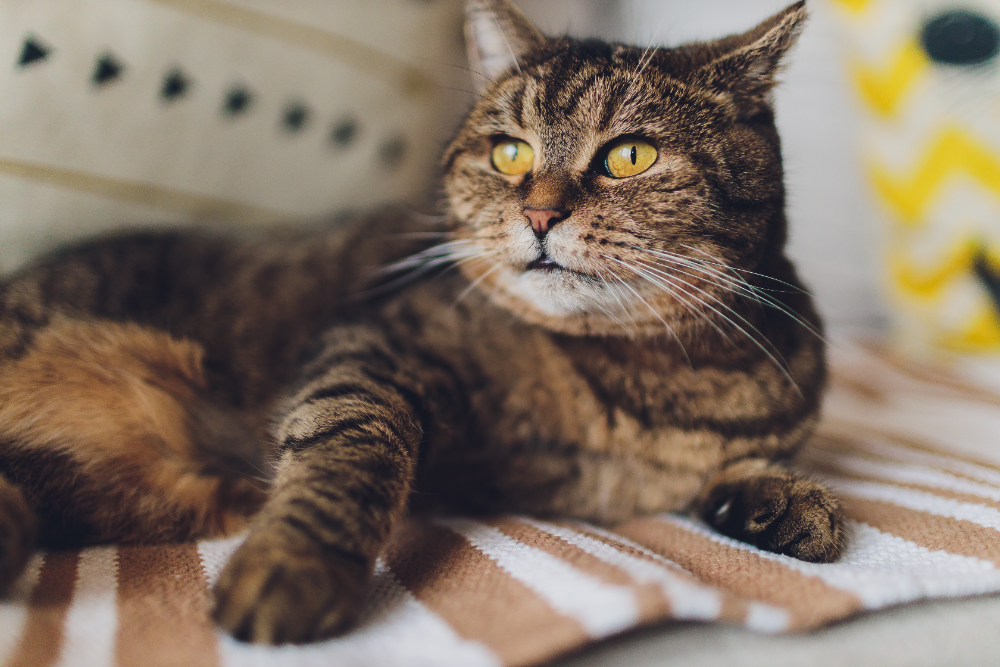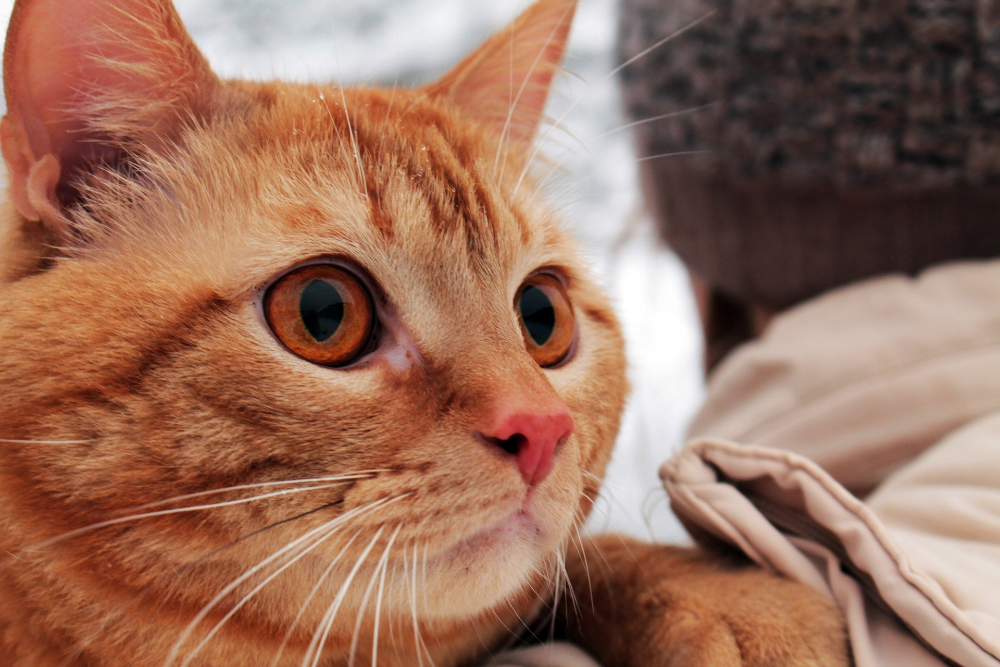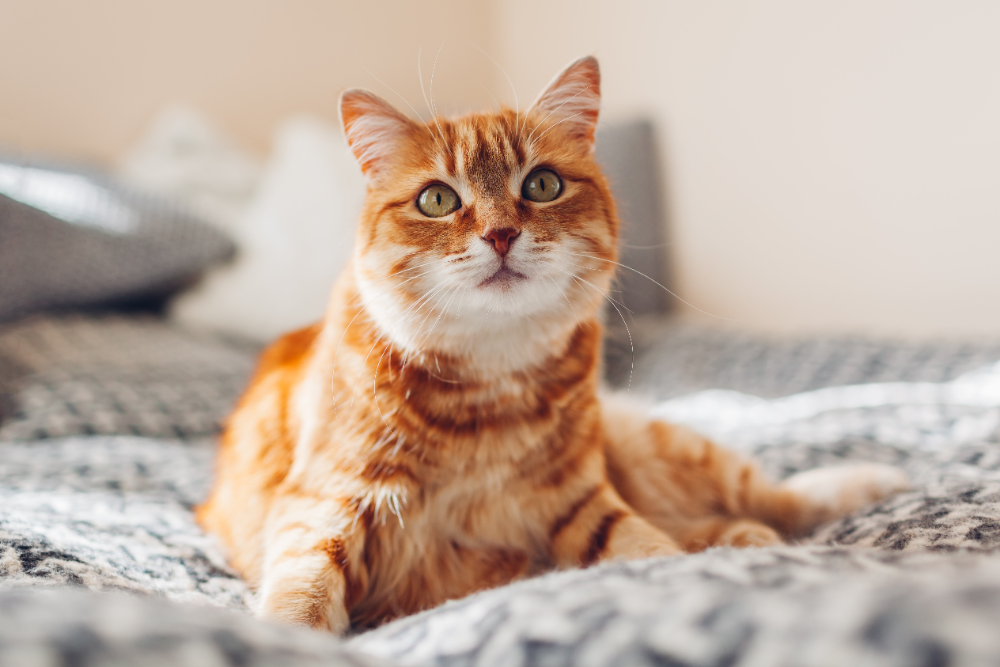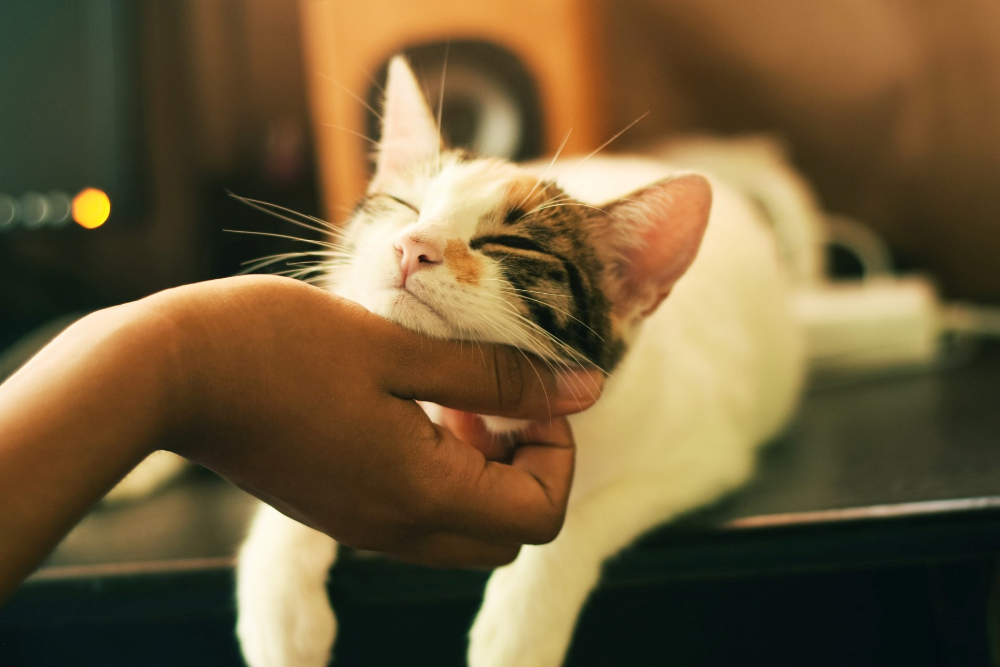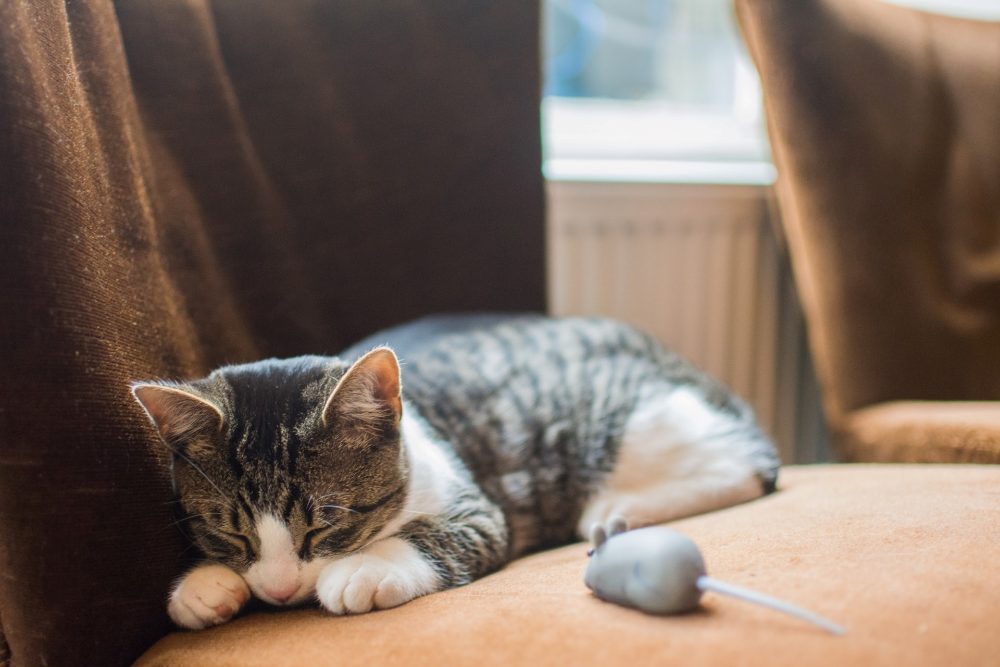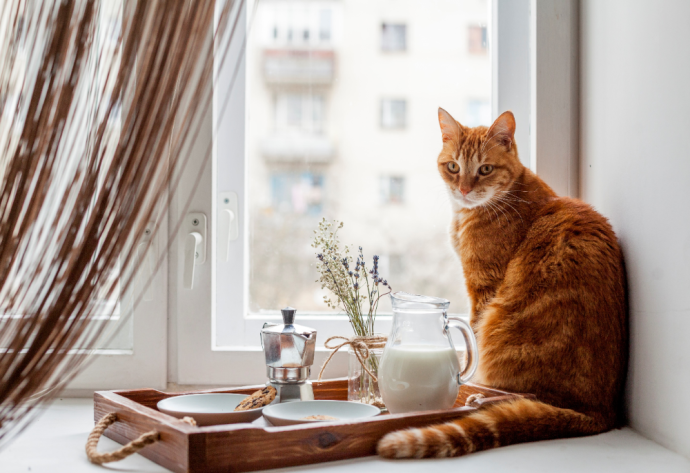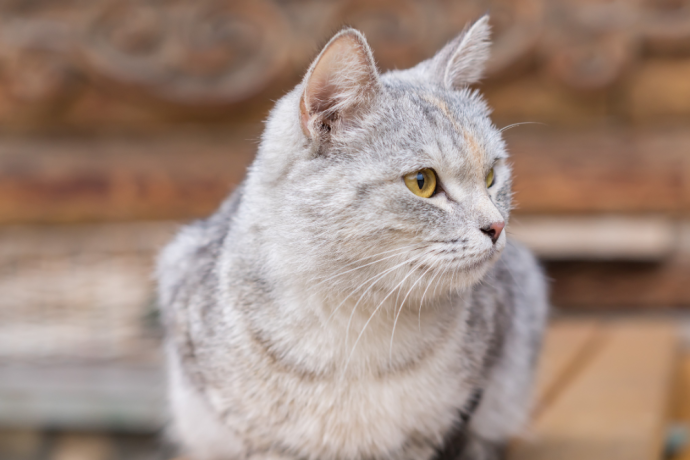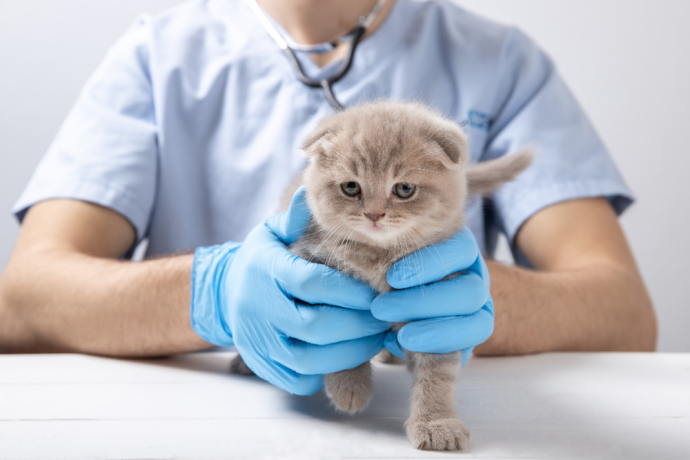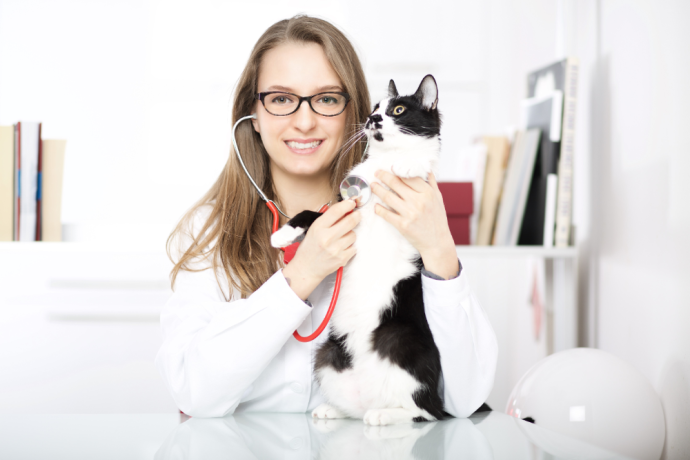Common Nutrient Deficiencies in Cats (Vet Advice)
Written by:
Author: Dr. Sara Ochoa
Dr. Sara Redding Ochoa is a veterinarian with many years of experience and higher education. During her time in veterinary school she was able to learn form some of the most well-known veterinarians from all over the world. Sara lives happily with her husband Greg and her babies Ruby the schnoodle, and Bam-Bam her bunny. Dr. Sara Redding Ochoa has a passion and love for animals that makes her a wonderful asset to our team.
View all 13 articlesLearn about our editorial process and veterinary review board.
Viewed: 2167
Updated on: 02/18/2021
When feeding your pet, you need to make sure that they are getting all the required vitamins and minerals to keep them happy and healthy. Cats have a different nutritional need than dogs and people. Make sure that you are feeding your pet a well-balanced diet that will meet their dietary needs. This article will explain the common nutritional deficiencies that you can see in your pet if they are not eating a proper diet. This article will also explain what you need to do if you suspect a nutritional problem in your cat.
If you are feeding a high-grade commercial food, your pet will most likely not have any problems. Some cats do still have nutritional problems and are eating excellent food. These cats usually have a gastrointestinal problem where they can not properly absorb the nutrient from their diet. When looking for pet food, look at the bag and look for an AFCO statement. This will let you know if the proper nutrients are included in that brand of food.
Most Common Nutritional Deficiencies in Cats
There are many problems seen in pets that can be caused by your cat not getting enough vitamins and minerals. These are some of the most common nutritional.
1. Taurine Deficiency in Cats
Taurine Deficiency is one of the most common nutritional deficiencies seen in pets.
What is taurine?
Taurine is an essential amino acid that all mammals need to survive. This amino acid is needed for heart and muscle function as well as helps with vision. Most other animals can make this amino acid from other amino acids. Cats, however, cannot make enough of this amino acid to meet their needs. Thus this amino acid needs to be supplemented in their diets.
READ MORE: Automatic Cat Feeders Reviews
Causes of Taurine Deficiency
If your pet does not have enough taurine in their diet, they can have the following problems:
- Blindness: Taurine is needed for the proper development of the cells of the retina in the eye. If your pet does not eat the proper amount of taurine, these cells in the eye can die, leading to poor vision and even blindness. This condition is known as progressive retinal degeneration. This condition may go unnoticed until the damage cannot be reversed. Once the cells in the eye die, there is no way for your pet to get more. Nutritional Problems in Cats: Taurine Deficiency, and Vitamin A Excess by
- Blindness: Taurine is needed for the proper development of the cells of the retina in the eye. If your pet does not eat the proper amount of taurine, these cells in the eye can die, leading to poor vision and even blindness. This condition is known as progressive retinal degeneration. This condition may go unnoticed until the damage cannot be reversed. Once the cells in the eye die, there is no way for your pet to get more. Nutritional Problems in Cats: Taurine Deficiency, and Vitamin A Excess by Harvard School of Public Health.
- Heart Problems: Taurine is needed for the muscles of the heart to function properly. If your pet is deficient in taurine, these muscles will become weak. This can lead to heart failure or a condition known as dilated cardiomyopathy. If left untreated, this can be a fatal condition. Systolic and diastolic dysfunction of the left ventricle induced by dietary taurine deficiency in cats
If any of these problems are noticed in your pet, it is best to supplement their diet with taurine. Your veterinarian can help you figure out if the signs that you are seeing are due to low taurine in your cat’s diet and help you find a much better diet for your pet.
2. Thiamine Deficiency in Cats
What causes thiamine deficiency in cats?
Thiamine, also known as vitamin B1, is an essential vitamin need for metabolizing carbohydrates in the nerves. Certain raw fish contains an enzyme thiaminase the destroy thiamine. If your pet is eating raw fish, signs of thiamine deficiency can occur in just a few weeks. Thiaminase is deactivated by heat. By cooking the fish, this will help prevent thiamine deficiency, as long as an adequate amount of thiamine is in your pet’s diet.
READ MORE: How long do Cats stay in Heat
Signs of Thiamine Deficiency in Cats
The symptoms of thiamine deficiency are not very specific and can include anorexia, weight loss, and decreased activity. Most of the signs seen with thiamine deficiency are neurological problems such as enlarged pupils, uncoordinated gait, weakness, falling, or circling. As your pet’s signs progress, you may notice seizures or total collapse.
Diagnosis Thiamine Deficiency in Cats
Your veterinarian will usually diagnose thiamin deficiency based on your pet’s feeding history. They can confirm their diagnosis by taking blood samples. These will show an increased blood level of pyruvate and lactate.
How do you treat thiamine deficiency in cats?
If your cat has been diagnosed with thiamine deficiency, your veterinarian will prescribe a thiamine supplement. This will usually reverse the symptoms you see in just a few days. Usually, they are put on an oral supplement for several months to make sure that all the signs are resolved. If your pet does not have severe neurological signs that are expected to make a full recovery, however, those who do have neurological signs may always have these problems that would prevent normal activity.
3. Vitamin D Deficiency in Cats
Many people and some other animals can absorb vitamin D from the sun. Cats are not able to absorb vitamin D from the sun, thus need it supplied in their diets. Vitamin D is needed to help regulate calcium and phosphorous in your pet’s body. Cats, especially young cats, can become deficient in Vitamin D if they are not eating a proper diet.
Can cats get vitamin D deficiency?
Cats can become deficient in vitamin D if they are not fed a proper diet. There are two different types of vitamin D deficiencies seen in pets.
READ MORE: What does it mean when a Stray Cat follows you
Rickets – vitamin D deficiency seen in kittens
Rickets is seen in young, growing kittens causing soft and deformed bones. It is caused by not enough phosphorus, calcium, or vitamin D in your pet’s diet. This is most commonly seen in cats fed an all-meat diet.
Common signs seen in kittens with rickets are:
- Not wanting to move
- Lameness in the back legs,
- Bowing of legs
- Not able to control muscle movements.
Bone problems become more severe after your pet is 5 to 14 weeks old. Most kittens will be quiet and not play. These kittens will be in the sitting position or lay down with their back legs stretched out away from their body.
Rickets is easily diagnosed based on your pet’s history, presenting signs, exam, blood work, and x-rays. By correcting your cat’s diet, rickets can be successfully treated if there are no broken bones or irreversible damage.
Many studies show that homemade diets for pets do not contain adequate minerals and do not have the proper calcium-to-phosphorus ratio. High-quality commercial food is recommended for you to feed your kitten to keep them healthy.
Osteomalacia Vitamin D deficiency in Adult cats
Osteomalacia is very similar to rickets but seen in mature adult bones. The signs seen are like those in kittens but usually less severe. These pets fail to thrive, have poor hair coats, and usually eat non-food objects. Deformities are commonly seen in the spine, where the spin is curving. Eventually, the bones become so brittle they fracture.
To diagnosis osteomalacia, your veterinarians will evaluate your pet’s diet to make sure it contains enough calcium, phosphorus, and vitamin D for healthy bones. X-rays can see the effects osteomalacia has on the skeleton.
Cats with osteomalacia will be confined for the first week while their diet is changed. The response to the correct diet is very quick and results seen within 1 week. Your pet will need to be prevented from jumping or climbing because their bones can still break. After 3 weeks, your pet will be allowed to be a little more active but will not be completely free of restriction until their bones return to normal. Your vet will take x-rays to monitor your cat’s progress. Complete recovery can usually be expected in a few months.
4. Calcium Deficiency in Cats
A calcium deficiency in pets can lead to a disease known as nutritional secondary hyperparathyroidism. This can cause what is referred to as rubber jaw syndrome or fibrous osteodystrophy. This is a condition where the calcium in the bone is replaced with softer connective tissues like the cartilage the makes up your ear. Most cats seen with nutritional Secondary Hyperparathyroidism are eating a meat-only diet. Read more about Secondary Hyperparathyroidism.
The parathyroid gland produces a hormone that controls the metabolisms of calcium and phosphorus in your pet’s body. Too much of this hormone is called hyperparathyroidism. The parathyroid gland releases more hormone when there is an abnormally low level of calcium circulating in the blood causing calcium to be moved from storages such as your cat’s bones to the bloodstream. If too much parathyroid hormone is released for a long period of time, the calcium that is removed from the bone is replaced by immature fibrous connective tissue. This causes the fibrous osteodystrophy that causes the bones, especially the jawbone, to seem rubbery.
Your veterinarian will diagnose this with a simple blood test testing the calcium levels in your pet’s body. If your cat does have low calcium, your veterinarian will recommend switching to a diet with a higher calcium content and possibly calcium supplements.
READ MORE: Cat Stomach Gurgling
Final Thoughts
When looking for a diet for your pet, make sure that all your cat nutrient needs are being met. There are side effects of not supply your pet with the needed vitamins and minerals. Many of these can be easily reversed with just a change in diet, but some leave lifelong problems. There are many great pet foods to choose from, pick out the best cat food that has the minerals and vitamins that your cat needs to live a long and healthy life.
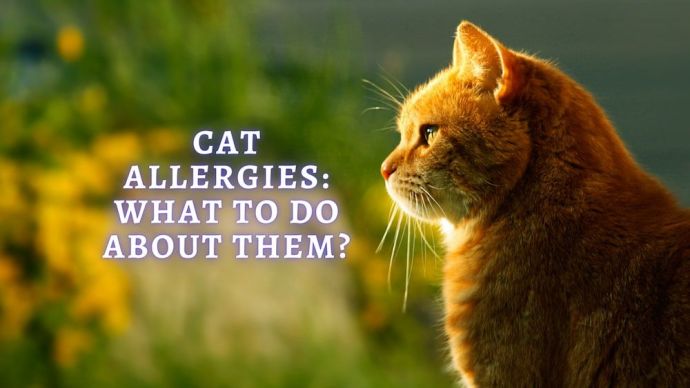 Cat Veterinary Tips Cat Allergies: Symptoms, Causes, Testing, Treatment, and Prevention (Vet Advice)
Cat Veterinary Tips Cat Allergies: Symptoms, Causes, Testing, Treatment, and Prevention (Vet Advice) - 340
- 0
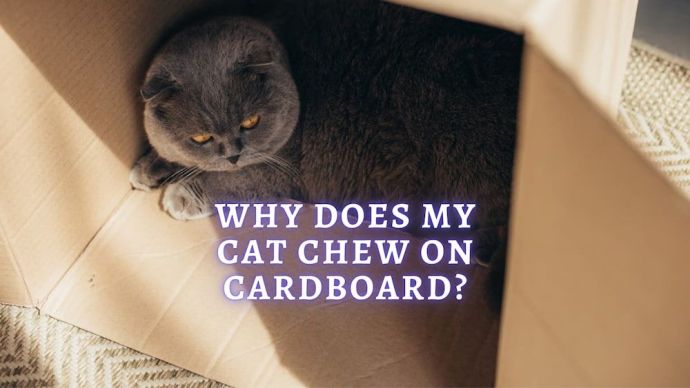 Cat Veterinary Tips Cat Chewing Cardboard: Why Does My Cat Chew On Cardboard? Vet Advice
Cat Veterinary Tips Cat Chewing Cardboard: Why Does My Cat Chew On Cardboard? Vet Advice - 4382
- 0
 Cat Veterinary Tips My Cat Lost its Voice: Can Cats get Laryngitis? (Vet Advice)
Cat Veterinary Tips My Cat Lost its Voice: Can Cats get Laryngitis? (Vet Advice) - 23554
- 13
 Cat Care Why Does My Cat Attack My Legs? 10 Reasons Why and What To Do About It (Vet-Approved Advice)
Cat Care Why Does My Cat Attack My Legs? 10 Reasons Why and What To Do About It (Vet-Approved Advice) - 46013
- 21
 Cat Veterinary Tips Cat Stomach Gurgling: Vet Advice on Why is Your Cat Stomach Gurgling?
Cat Veterinary Tips Cat Stomach Gurgling: Vet Advice on Why is Your Cat Stomach Gurgling? - 36469
- 4
 Cat Veterinary Tips My Cat Lost its Voice: Can Cats get Laryngitis? (Vet Advice)
Cat Veterinary Tips My Cat Lost its Voice: Can Cats get Laryngitis? (Vet Advice) - 23554
- 13









